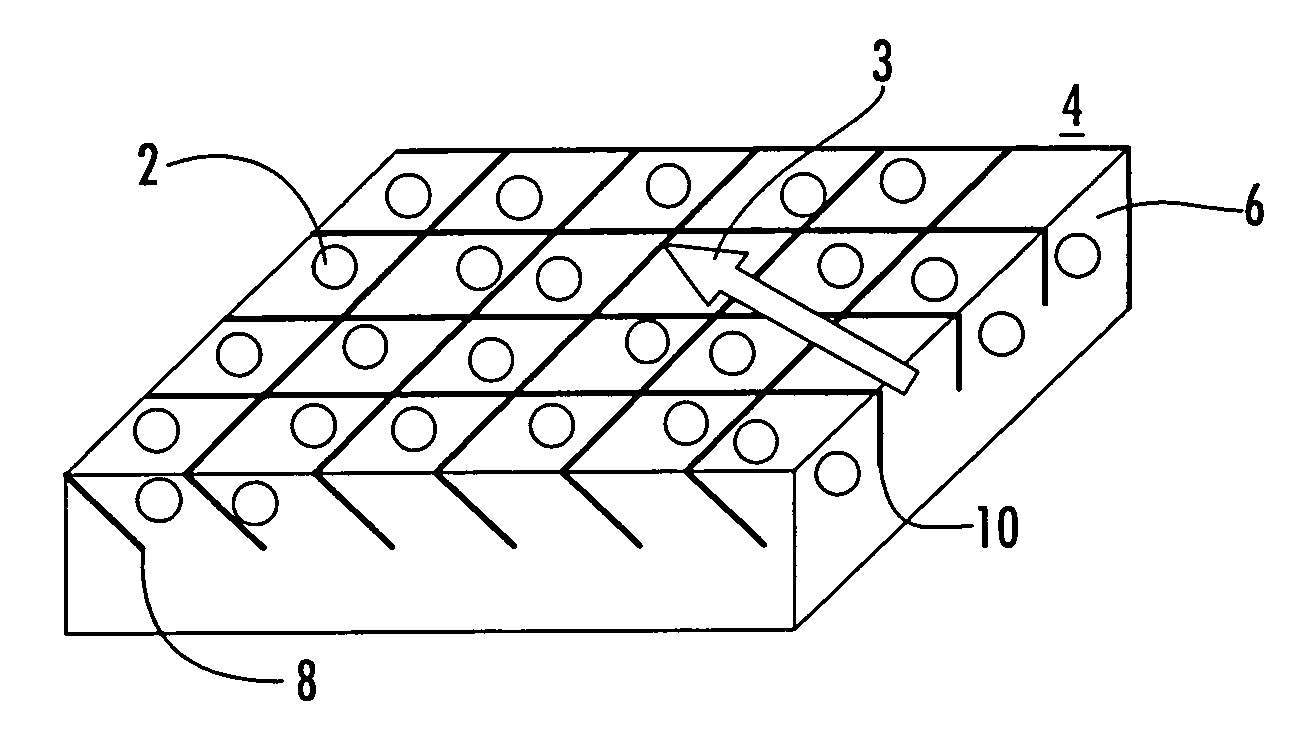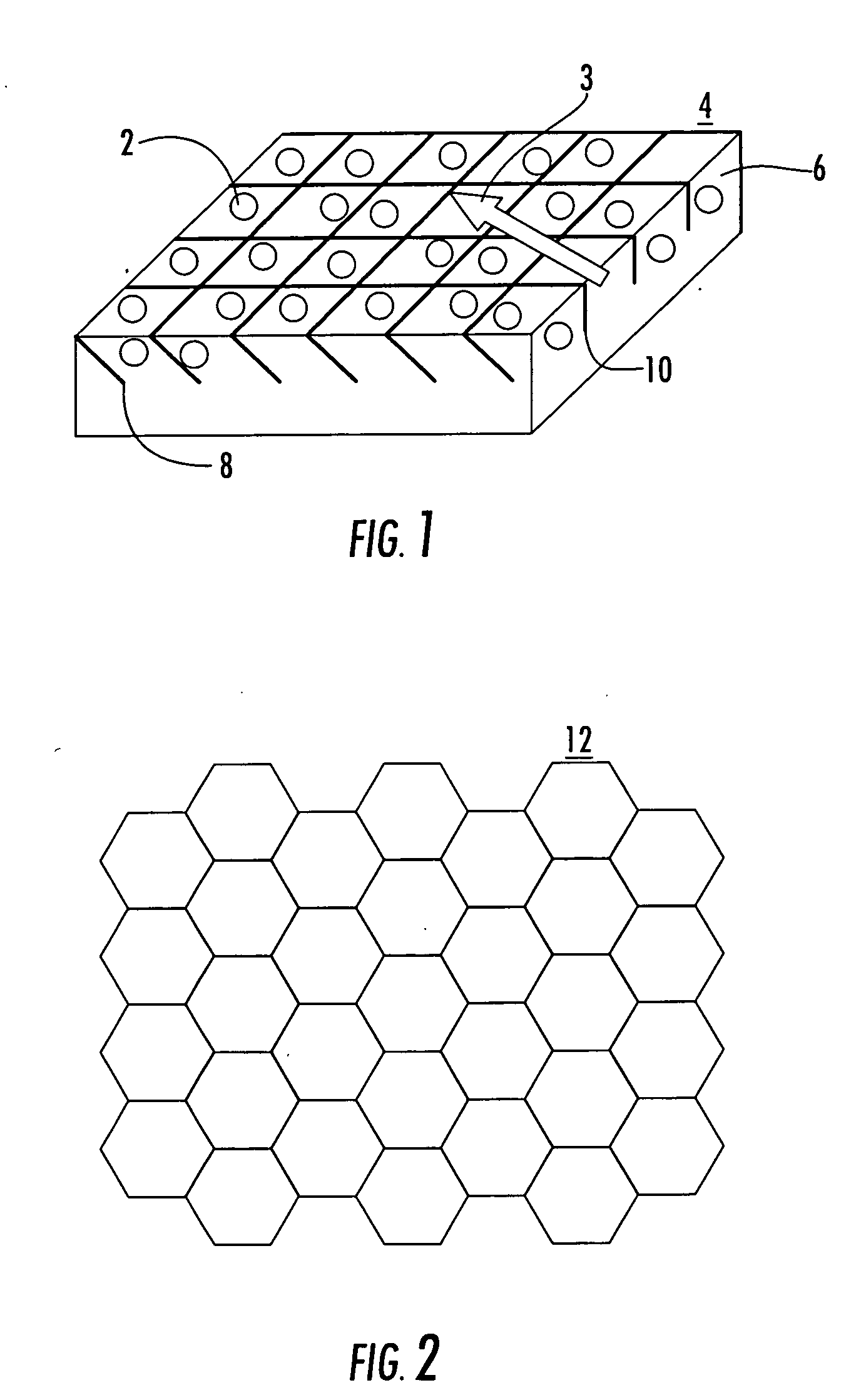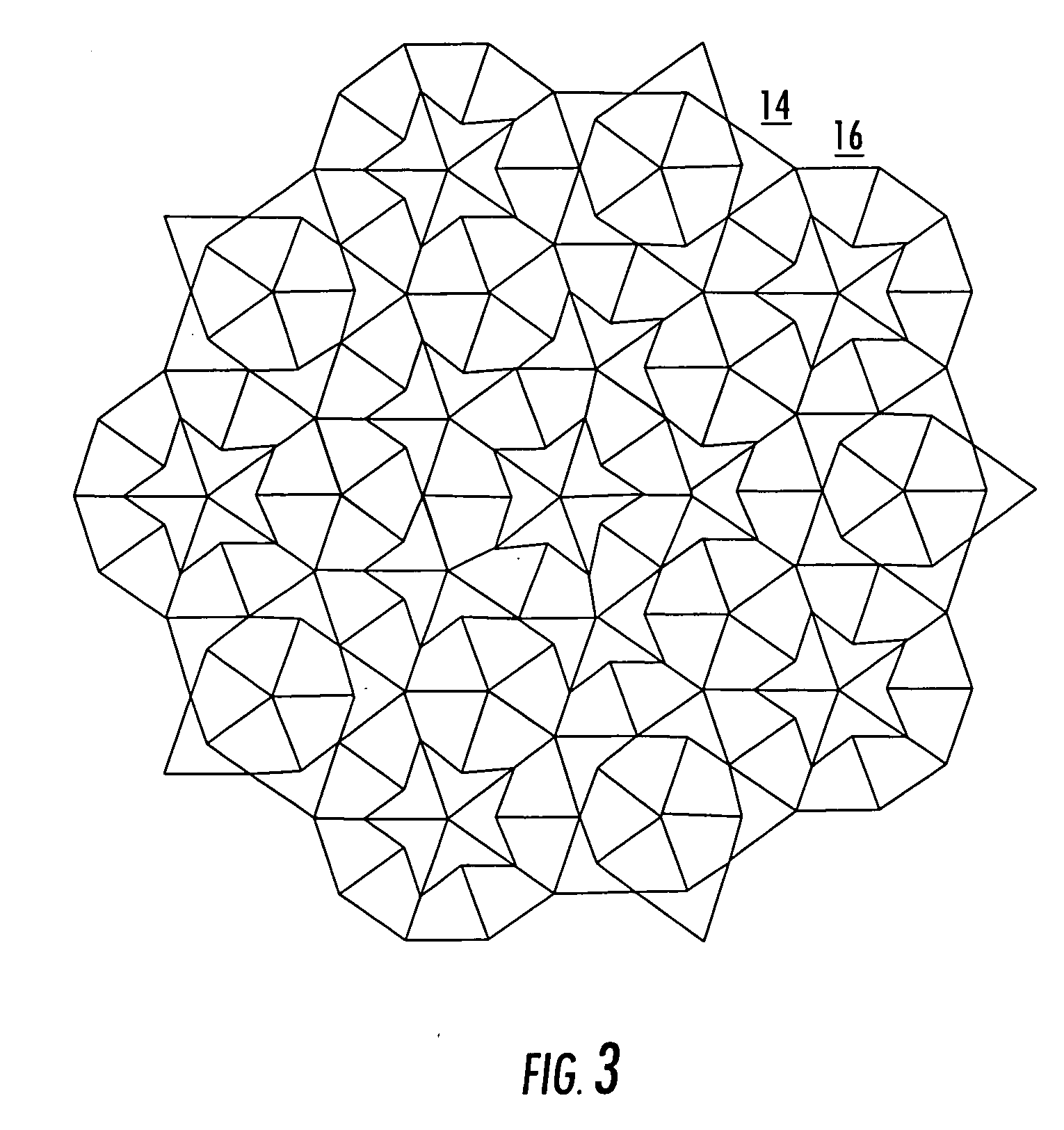High temperature insulation with enhanced abradability
a technology of abradability and high temperature insulation, applied in the direction of vacuum evaporation coating, solid-state diffusion coating, transportation and packaging, etc., can solve the problems of inferior thermal expansion match with the substrate, and less thermal stability of the coating system. , to achieve the effect of higher abradability of the filler
- Summary
- Abstract
- Description
- Claims
- Application Information
AI Technical Summary
Benefits of technology
Problems solved by technology
Method used
Image
Examples
Embodiment Construction
[0023]The present invention provides abradability enhancing features for friable graded insulation (FGI) coatings, primarily for use on ceramic matrix composite (CMC) components used in combustion turbines, to significantly improve the abradability of the coating. The surface of the coating is divided into columns with various shaped top surfaces. The columns extend a desired depth into the insulation or can extend to multiple depths to balance strength to abradability characteristics. The transition from the columns' wall surface to the top surface can have an abrupt transition from the surface of the wall of the column to the top surface with a clearly defined angle, but can also involve a curvature. Neither the surface of the walls or the columns nor the surface of the top surfaces need to be flat, although in many embodiments of the invention they are essentially flat. The columns do not extend through the entire depth of the coating, to avoid the exposure of the CMC substrate. ...
PUM
| Property | Measurement | Unit |
|---|---|---|
| angle | aaaaa | aaaaa |
| temperatures | aaaaa | aaaaa |
| temperatures | aaaaa | aaaaa |
Abstract
Description
Claims
Application Information
 Login to View More
Login to View More - R&D
- Intellectual Property
- Life Sciences
- Materials
- Tech Scout
- Unparalleled Data Quality
- Higher Quality Content
- 60% Fewer Hallucinations
Browse by: Latest US Patents, China's latest patents, Technical Efficacy Thesaurus, Application Domain, Technology Topic, Popular Technical Reports.
© 2025 PatSnap. All rights reserved.Legal|Privacy policy|Modern Slavery Act Transparency Statement|Sitemap|About US| Contact US: help@patsnap.com



